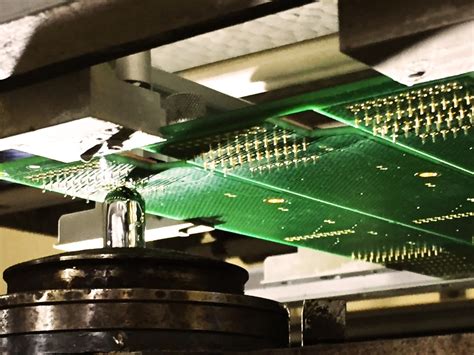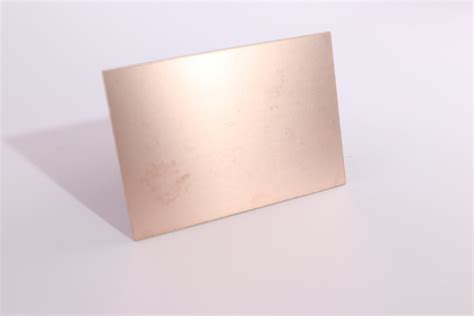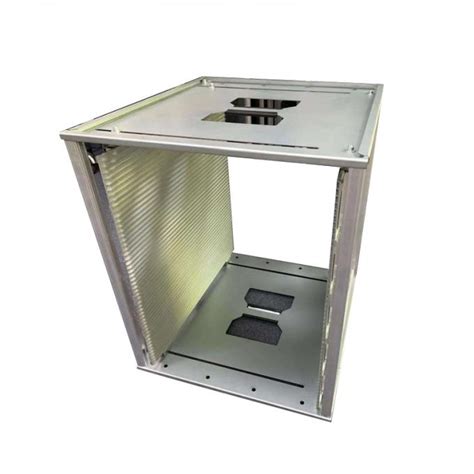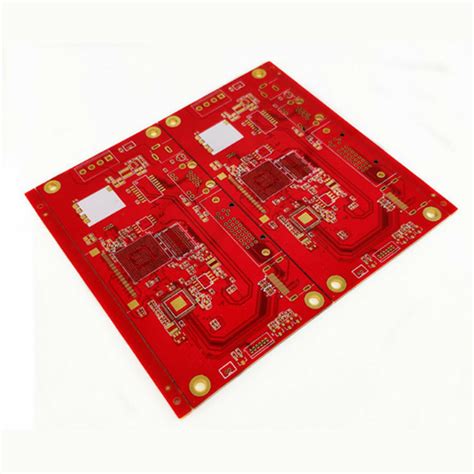Streamline Your PCB Fabrication Quote Process

Key Takeaways
Navigating PCB manufacturing quotes requires balancing technical specifications with budget considerations. Modern tools allow you to compare real-time pricing across PCB manufacturing companies, eliminating guesswork. For instance, adjusting layer counts or material choices (like FR4 vs. HDI) directly impacts PCB manufacturing cost, and automated calculators help visualize these trade-offs instantly.
Tip: Always verify if your design’s layer count aligns with the minimum required for functionality—over-engineering can inflate costs by up to 30%.
Here’s a quick comparison of common PCB types and their cost drivers:
| PCB Type | Key Cost Factors | Typical Use Cases |
|---|---|---|
| FR4 | Layer count, board thickness | Consumer electronics |
| HDI | Microvia density, blind/buried vias | Wearables, medical devices |
| Flex | Bend cycles, substrate material | Aerospace, IoT sensors |
Automating your PCB manufacturing business workflows reduces human error and accelerates order processing. For example, integrated platforms let you input design files, adjust specs dynamically, and receive quotes within minutes. Tools like advanced PCB cost estimators simplify this further by factoring in material waste, lead times, and bulk discounts.
By prioritizing standardized layer stacks and leveraging digital tools, you can trim unnecessary expenses while maintaining quality—a critical advantage in competitive markets.

Simplify PCB Quote Processes Instantly
Navigating PCB manufacturing quotes often involves sifting through fragmented data from multiple vendors, which can delay critical project timelines. Modern tools now enable you to bypass manual entry by automating real-time estimates for materials like FR4, HDI, or Flex boards. By inputting layer counts, material preferences, and design specifications, you instantly compare PCB manufacturing cost benchmarks across PCB manufacturing companies, eliminating guesswork.
These platforms integrate parametric calculators that adjust pricing based on design complexity, ensuring accuracy while aligning with your budget. For instance, adjusting copper weight or via types triggers dynamic updates, reflecting how subtle changes impact PCB manufacturing business expenses. This approach not only accelerates decision-making but also highlights cost-saving opportunities—like opting for standard finishes over specialized ones—without compromising quality.
Automated systems also centralize communication, allowing you to submit RFQs to multiple PCB manufacturing partners simultaneously. This eliminates back-and-forth emails, ensuring faster turnaround while maintaining transparency. By streamlining workflows, you reduce administrative overhead and focus resources on design optimization rather than quote management. The result? A seamless transition from prototyping to production, with fewer delays and clearer cost expectations.
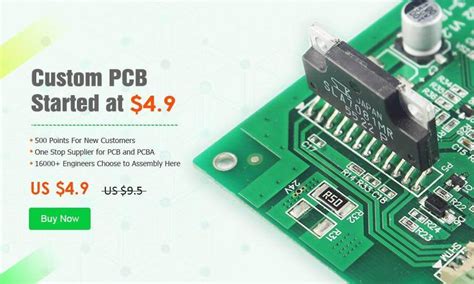
Compare Real-Time PCB Pricing Options
When sourcing PCB manufacturing services, comparing real-time pricing options ensures you balance quality and PCB manufacturing cost effectively. Modern platforms allow you to input design parameters—like layer count, material type (FR4, HDI, or flex), and surface finish—to instantly generate quotes from multiple PCB manufacturing companies. This transparency helps identify cost drivers, such as impedance control requirements or tight tolerances, enabling you to adjust specs before finalizing orders.
By leveraging automated tools, you can benchmark quotes side-by-side, highlighting discrepancies in lead times or bulk-order discounts. For instance, a 6-layer FR4 board might show a 12% price variation between suppliers due to differing panel utilization rates or testing protocols. Real-time data also lets you negotiate better terms with PCB manufacturing business partners, especially when scaling production.
Advanced systems even factor in regional logistics fees or currency fluctuations, ensuring your comparisons reflect true landed costs. This approach not only streamlines decision-making but also prevents oversights that inflate budgets—critical when managing high-mix, low-volume projects.
Optimize Layer Specs for Cost Efficiency
When requesting PCB manufacturing quotes, your layer configuration directly impacts PCB manufacturing cost. Over-engineering designs with unnecessary layers or overly tight tolerances can inflate expenses without adding functional value. Start by analyzing your design’s minimum requirements: Can a 4-layer board achieve the same performance as a 6-layer alternative? Could adjusting trace widths or spacing reduce layer counts? Many PCB manufacturing companies offer free design-for-manufacturability (DFM) reviews to identify such optimizations.
Material selection also plays a critical role. While high-Tg FR4 suits most applications, specialized substrates like Rogers or polyimide may unnecessarily escalate costs unless your project demands extreme thermal or frequency performance. For PCB manufacturing business teams handling mixed-volume orders, consolidating layer specs across similar projects can unlock bulk pricing advantages. Advanced HDI designs benefit from staggered microvias instead of stacked structures, lowering drilling complexity.
By aligning layer choices with actual electrical and mechanical needs, you maintain quality while avoiding premium pricing traps. Real-time quote tools from modern PCB manufacturing partners let you instantly compare cost impacts of layer adjustments, creating a balanced approach to performance and budget. This strategic optimization ensures your designs remain competitive without compromising reliability.
Automate Fabrication Quotes with Precision
By leveraging advanced automation tools, PCB manufacturing workflows can eliminate manual data entry errors and deliver precision-driven quotes tailored to your project’s needs. Modern platforms enable you to input design parameters—such as layer counts, material types (FR4, HDI, or Flex), and surface finishes—and instantly receive accurate cost breakdowns. This eliminates guesswork, ensuring PCB manufacturing companies account for variables like panel utilization and tolerances while aligning with your budgetary constraints.
Automated systems also empower you to compare real-time pricing across suppliers, factoring in bulk order discounts or expedited turnaround fees. For instance, adjusting copper weight or solder mask colors triggers dynamic recalculations, letting you optimize PCB manufacturing cost without compromising quality. This approach is particularly valuable for scaling a PCB manufacturing business, where consistent pricing accuracy builds client trust and reduces negotiation cycles.
What’s more, these tools integrate seamlessly with design software, automatically extracting critical specs to generate error-free quotes. By standardizing complex variables like impedance control or via fill requirements, you minimize delays caused by miscommunication. The result? Faster approvals, fewer revisions, and a streamlined path from prototype to production—all while maintaining cost transparency at every stage.
Speed Orders with Automated Calculators
By integrating PCB manufacturing cost calculators into your workflow, you eliminate time-consuming manual quote requests. These tools analyze design parameters—like layer count, material type (FR4 vs. flexible substrates), and surface finish—to generate real-time estimates directly within your design software. For PCB manufacturing companies, this automation reduces back-and-forth communication, slashing quote turnaround from days to minutes.
Advanced calculators let you adjust specs dynamically—for example, swapping a 6-layer HDI design for an 8-layer standard stack-up—and instantly see how it impacts PCB manufacturing cost. This capability is critical when balancing performance requirements against budget constraints. You can even simulate bulk order discounts or compare pricing across multiple vendors, ensuring you partner with PCB manufacturing business providers offering the best value.
The result? Faster decision-making. Instead of waiting for human-reviewed quotes, you secure accurate pricing upfront, validate feasibility early, and accelerate order placement. For time-sensitive projects, this streamlined approach ensures your prototypes or production batches enter fabrication queues sooner, keeping your timelines intact.

FR4/HDI/Flex PCB Cost Estimators
Accurately predicting pcb manufacturing cost requires specialized tools tailored to material types and design complexity. Modern cost estimators analyze FR4, HDI, and Flex designs by evaluating layer counts, copper weights, and surface finishes, enabling you to generate precise quotes in seconds. For pcb manufacturing companies, these tools reduce manual errors by automating calculations for impedance control, via structures, and solder mask requirements—critical factors influencing final pricing.
When comparing pcb manufacturing business proposals, integrated estimators let you adjust parameters like substrate thickness or flex circuit bend radii to see real-time price impacts. For example, switching from standard FR4 to high-frequency laminates may increase material costs by 15–30%, while HDI designs with microvias often demand tighter tolerances. By inputting your Gerber files directly into these platforms, you eliminate guesswork and align specifications with budget constraints more effectively.
Advanced systems also benchmark your project against industry averages, highlighting opportunities to optimize pcb manufacturing workflows. Whether prototyping rigid-flex boards or scaling multilayer HDI orders, dynamic estimators empower you to balance performance requirements with cost-efficiency—ensuring every design iteration stays financially viable.

Streamline PCB Fabrication Workflows
By integrating automated quoting systems with your existing design software, you can eliminate manual data entry and reduce errors in PCB manufacturing workflows. Leading PCB manufacturing companies now offer cloud-based platforms that synchronize design files, material selections, and production parameters – enabling real-time adjustments to specifications before finalizing orders. This seamless connectivity helps you optimize PCB manufacturing cost factors like layer counts, copper weights, and surface finishes through instant feedback loops. Automated workflow tools also standardize communication protocols between your team and fabrication partners, ensuring all stakeholders access the latest revision data. For PCB manufacturing business operations handling multiple concurrent projects, these systems provide centralized dashboards to track quote approvals, material inventories, and production timelines. The result is a 40-60% reduction in administrative tasks, allowing engineers to focus on design improvements rather than paperwork.
Conclusion
By integrating automated tools into your PCB manufacturing workflows, you gain unprecedented control over PCB manufacturing cost variables while eliminating manual estimation errors. Modern platforms enable direct comparison of PCB manufacturing companies by factoring in material selections, layer configurations, and turnaround times—all in real time. This transparency not only accelerates decision-making but also reveals hidden cost-saving opportunities, particularly when balancing FR4, HDI, and flex board requirements.
For PCB manufacturing business leaders, adopting these systems translates to scalable efficiency—automated quote generation reduces administrative overhead by up to 70%, allowing teams to focus on design optimization and client relationships. The precision of digital calculators ensures alignment between project specifications and fabrication capabilities, minimizing costly revisions. As the industry shifts toward data-driven procurement, leveraging these tools positions your operations to adapt faster to market demands while maintaining predictable cost structures. Ultimately, streamlining quotes isn’t just about speed—it’s about building a competitive edge in an increasingly dynamic sector.
Frequently Asked Questions
How can I ensure accurate PCB manufacturing quotes for complex designs?
Reputable PCB manufacturing companies use automated calculation tools that factor in material choices (like FR4/HDI/Flex), layer counts, and tolerances. Uploading detailed Gerber files helps generate real-time estimates aligned with your project’s specs.
Why do PCB manufacturing costs vary between suppliers?
Differences arise from material sourcing, production capabilities, and quality certifications. Comparing quotes from multiple PCB manufacturing businesses lets you balance cost-efficiency with technical requirements, such as impedance control or surface finishes.
Can I adjust layer counts after requesting a PCB fabrication quote?
Yes, most platforms allow real-time adjustments to layer specifications. However, increasing layers or switching to advanced materials (e.g., HDI) may raise your PCB manufacturing cost. Always validate changes using instant pricing tools before finalizing orders.
How do automated tools accelerate PCB manufacturing workflows?
These systems eliminate manual data entry by analyzing design files to calculate material needs, production timelines, and bulk-order discounts. This reduces human error and ensures faster turnaround for prototypes or high-volume runs.
What factors most impact PCB manufacturing cost for small businesses?
Order volume, panelization efficiency, and material waste rates are critical. Partnering with PCB manufacturing companies offering flexible order sizes and design-for-manufacturing (DFM) feedback can optimize expenses without compromising quality.
Ready to Simplify Your PCB Order?
For tailored solutions that align with your budget and technical needs, please click here to explore Andwin PCB’s manufacturing services. Get instant quotes and expert support at every stage.


